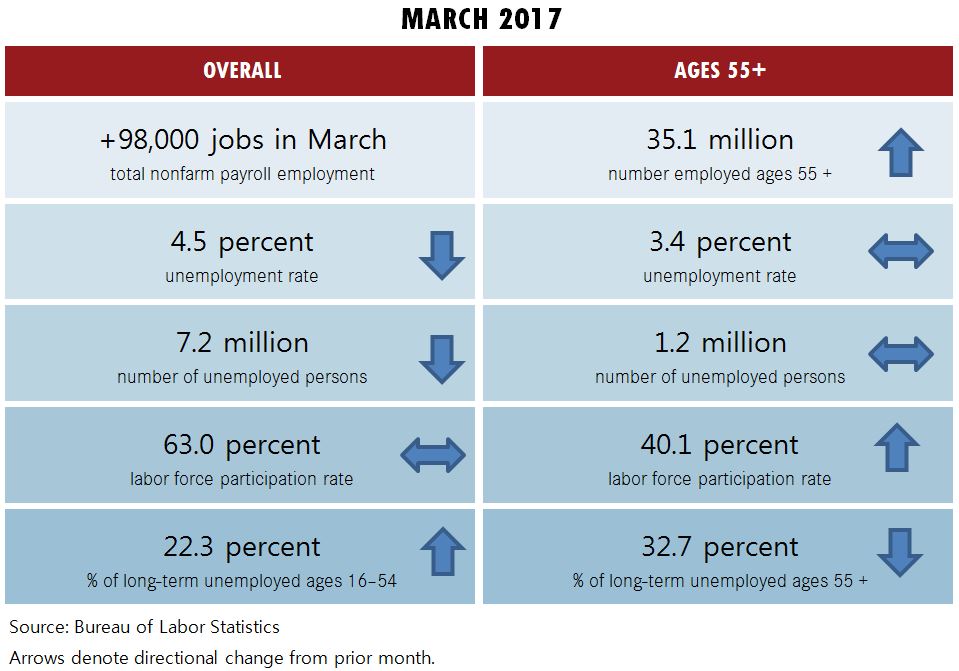AARP Eye Center
Labor Force Participation Rate for People Age 55+ Edges Up in March
By Jennifer Schramm, April 7, 2017 04:24 PM

Employment overview for those age 55+
The monthly Employment Situation Report from the Bureau of Labor Statistics (BLS) shows the economy added 98,000 jobs in March 2017 — an unexpectedly smaller increase from the first two months of the year. The number of persons age 55-plus who are employed increased slightly from February. Meanwhile, the unemployment rate for those age 55 and older remained unchanged, at 3.4 percent and approximately 1.2 million unemployed. The percentage of the 55-plus population that is either working or actively seeking work, i.e., the labor force participation rate, increased slightly to 40.1 percent. The labor force participation rate of people age 55-plus has remained at around 40 percent throughout the past year. In March the labor force participation rate of men age 55-plus was 46.1 percent, compared with 34.9 percent for women age 55-plus.
Spotlight on women age 55+ in the labor market
The percentage of women age 55-plus participating in the labor force has held steady over the past year, averaging 34.7 percent compared with 56.8 percent for women age 16 and over. However, over the longer term, women’s labor market participation has undergone significant shifts. Only about one-third of women were in the labor force when the government first began measuring their participation rate in 1948, and only 17.2 percent of women age 55-plus were in the workforce at that time. Over time more women began to enter the labor market; their overall participation rate peaked in 1999 at 60 percent. The labor force participation rate for women age 55-plus peaked in 2013 at 35.1 percent.
From 2000 to 2015 the labor force participation rate for most age groups and both sexes decreased. However, the participation rates of men and women age 55-plus rose from 2000 to 2009, with the rates for women 55-plus remaining close to 35 percent since 2010.
Education has been a key factor influencing women’s labor force participation and is likely to continue to have an impact. Over the past several years, women earned the majority of college degrees of all levels. If this trend continues, employers faced with the need for college-educated workers are likely to seek more ways to attract and retain female employees. This in turn may influence the number of women in the labor market — and the number who continue to work at older ages.
For more of this month’s employment data on Americans age 55 and over, check out PPI’s Employment Data Digest.
























































